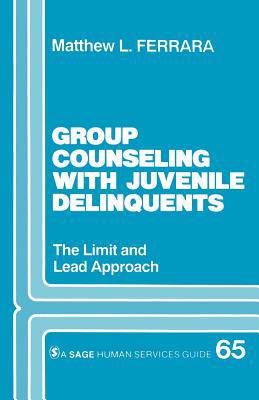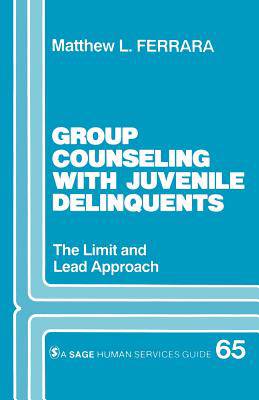
- Afhalen na 1 uur in een winkel met voorraad
- Gratis thuislevering in België vanaf € 30
- Ruim aanbod met 7 miljoen producten
- Afhalen na 1 uur in een winkel met voorraad
- Gratis thuislevering in België vanaf € 30
- Ruim aanbod met 7 miljoen producten
Zoeken
€ 238,45
+ 476 punten
Omschrijving
Published in cooperation with the University of Michigan School of Social Work As a counselor or therapist, wouldn′t it be useful to have a resource that clearly presents effective how-to guidelines for rehabilitating juvenile offenders? In Group Counseling with Juvenile Delinquents, Ferrara explores all aspects of counseling this special population, from the first group encounter through evaluating the effectiveness of the group. He examines various components of the group encounter including establishing a safe, helpful environment, replacing delinquent behaviors with prosocial ones, and responding to the specific needs of each juvenile delinquent. Included in this valuable volume are key points for conducting group sessions, a workbook and scenarios to use directly with group members, instructions for training staff, and a posttest for evaluating the effectiveness of the groups. "There is an extensive and useful discussion of intervention in terms of both traditional, guided group interactions and the more contemporary cognitive behavioral strategies. . . . Much effort has been exerted by Ferrara to insure that the program as presented has a strong empirical foundation. To this end, data and caveates are included as appropriate. As Ferrara wisely notes in his Preface, his program is likely to be most effective with those youths who would not have spontaneously self-corrected but are not seriously disturbed, chronic offenders. Among the various components of the group encounter program, the inclusion of a post-test for evaluating effectiveness is particularly encouraging." --Child & Family Behavior Therapy "It is obvious the author is experienced in group counseling of juvenile delinquents, in developing group counseling programs in juvenile correction facilities, and grounded in theories relevant to treating offenders. The book is succinctly and clearly written." -Social Work with Groups
Specificaties
Betrokkenen
- Auteur(s):
- Uitgeverij:
Inhoud
- Aantal bladzijden:
- 160
- Taal:
- Engels
- Reeks:
- Reeksnummer:
- nr. 65
Eigenschappen
- Productcode (EAN):
- 9780803938854
- Verschijningsdatum:
- 10/10/1991
- Uitvoering:
- Paperback
- Formaat:
- Trade paperback (VS)
- Afmetingen:
- 147 mm x 218 mm
- Gewicht:
- 235 g

Alleen bij Standaard Boekhandel
+ 476 punten op je klantenkaart van Standaard Boekhandel
Beoordelingen
We publiceren alleen reviews die voldoen aan de voorwaarden voor reviews. Bekijk onze voorwaarden voor reviews.








